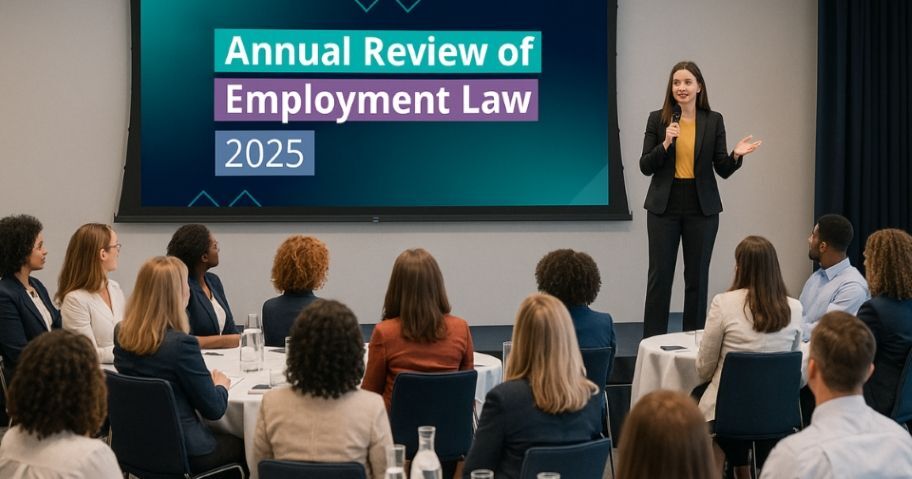
Emer Hinphey is an experienced HR and talent development professional. Based in Belfast, Emer Hinphey is a Partner in AAB People. Emer was the CEO and Co-Founder of Think People Consulting, which has become part of AAB. Emer's approach is the same as AAB People's: practical and pragmatic; bespoke to the size, culture, and objectives of each unique organisation. Emer works with the team to develop and implement business-propelling and culture solutions and sustaining lasting partnerships with clients.
Welcome to HR A to Z, a series crafted by AAB to decode the latest trends shaping the world of work.
Mergers and acquisitions (M&A) are often seen as strategic milestones - moments of opportunity, expansion, and potential. But despite the financial models, synergies promised, and bold growth projections, the success of a deal often hinges on something far less tangible - people.
In our experience, both as founders who have sold businesses and as trusted advisors guiding clients through the process - working alongside our Corporate Finance colleagues, who handle preparing for sale, due diligence, and the sales process - through to post-deal integration, the human element remains the most critical and often overlooked driver of value creation.
In this article we explore the critical impact of people and culture integration on a merger or acquisition. We also share a practical approach to due diligence and integration that helps leaders move beyond resistance, build resilience and realise the full value of their deal
Why People and Culture are the Cornerstones of M&A Success
Due diligence traditionally focuses on finances, systems, and legal risk — but it’s often cultural disconnects, leadership misalignment, and the absence of a structured integration plan that quietly unravel deals after completion.
Consider this:
- Over 60% of M&A deals fail to achieve their intended value.
- Nearly 50% of deal failures are driven by people-related issues.
- Only 4% of companies conduct a formal cultural assessment during due diligence, despite 92% of failed deals citing cultural misalignment as a root cause.
These aren’t just cautionary statistics, they’re a clear call to action.
People and culture due diligence and integration cannot be an afterthought. To protect and accelerate value, it must be treated as a core workstream from the earliest stages of a deal.
When done right, integration:
- Aligns leadership and strategy
- Blends and protects organisational cultures intentionally
- Brings clarity, communication, and certainty to teams
- Increases engagement, reduces attrition, and builds momentum
When neglected? Integration becomes a source of confusion, friction, and fear. We’ve seen founders walk away from earn-outs, teams disengage entirely, and businesses lose agility, all because the people and culture aspects weren’t given the attention needed.
The transition period is especially complex for founder-led businesses, where identity, autonomy, and decision-making structures are shifting. In this period of flux, structured planning, agility, and continuous communication give people at all levels certainty about the road ahead, boosting effectiveness and accelerating integration.
The Four Steps to People-led Integration
We believe every deal deserves a structured framework for people and culture integration, and we’ve seen these work best when they follow a similar structure to the one highlighted below.
Step 1: Establish Cultural Alignment
Start with leadership. Assess not just experience and capabilities, but strategic alignment, change readiness, and personal values.
• Go beyond CVs and surface-level interviews.
• Use psychometric tools and ambition interviews.
• Create space for authentic conversations.
• Get clear on your culture and assess the incoming businesses culture for fit or areas that will need focus.
• Recognise and address potential culture and structure misalignments early.
• Set up governance forums and integration leadership teams to ensure continuity and capability support from Day 1.
Cultural and leadership gaps are often the silent killers of deals. Even when the strategy is sound, behavioural mismatches and a lack of shared vision stall execution. Many deals fail not because of poor financial models, but because the leadership lacked tools to manage cultural integration.
Step 2: Structured Planning & Execution
Integration can’t be managed “off the side of the desk.” It demands clear ownership, structured planning, and appropriate resource allocation.
• Define workstreams early and assign clear owners.
• Build a robust People Strategy covering retention, role clarity, career paths, and change enablement.
• Use diagnostic tools to assess readiness and alignment.
• Start your value creation plan early - momentum matters.
• Prioritise communication: clarity and repetition beat perfection.
Structure builds a sense of safety by providing people with clarity on what’s changing, when, and why. It reduces ambiguity and allows teams to focus on execution rather than speculation. Data brings precision to that structure, informing decisions, tracking progress, and enabling accountability. And underpinning it all is communication. Consistent, transparent messaging that builds trust, keeps people engaged, and reinforces alignment at every level. Together, these three elements form the foundation for a confident, people-led integration.
Step 3: Deployment & Cultural Integration
This is the ‘doing’ phase, but deployment isn’t just task execution. It’s about keeping people connected, aligned, and engaged as integration unfolds.
• Avoid imposing a top-down culture. Co-create a hybrid model that brings the best of both organisations.
• Host immersion workshops and regular feedback loops.
• Track cultural KPIs, and act on what you hear.
• Offer targeted onboarding, mentoring, and retention plans - especially for high-impact roles.
• Equip leaders with cultural intelligence (CQ) and behavioural agility training.
Culture isn’t soft, it’s dynamic, operational, and measurable. Treat it like a business priority, and it will drive business results.
Step 4: Sustaining Value Creation
The deal may be done, but the integration is just beginning. Embedding culture and sustaining alignment happens over time - through behaviours, systems, and language.
• Stop referring to “legacy” brands or functions. Language shapes mindset.
• Reinforce the vision and answer the WIIFM (“What’s In It For Me?”) for every team.
• Track KPIs, conduct retrospectives, and adjust as needed.
• Celebrate integration successes visibly and consistently.
• Keep strategic goals visible, don’t let cultural or operational drift undermine progress.
Protecting revenue during integration requires predictable leadership and clear, consistent messaging that minimises disruption and uncertainty. At the same time, operational transparency helps uncover synergies, revealing opportunities to streamline processes, reduce costs, and enhance strategic alignment. By managing the transition proactively, organisations can also prevent value leakage in the form of burnout, turnover, and disengagement, ensuring momentum is sustained and the full potential of the deal is realised.
There’s a lot that needs to be done - systems, processes, operating models, structures. But all of it impacts people.
At best, these changes create distraction. At worst, they become barriers to performance. Structured planning, targeted training, and clear, repeated communication help people manage the disruption, and move forward with purpose.
You’ll know integration is working when ‘we’ no longer means ‘them and us’.
Merge the business: unite the people
Integrating two businesses is always complex. Systems, structures, and operations must shift, but none of it works without people.
When leaders are aligned, cultures are blended with care, and teams feel heard and supported, integration stops being a risk, and starts becoming the catalyst for real growth and value creation.
The truth? Getting this right is time-consuming. But it’s worth every minute and will most likely be the most decisive factor in achieving objectives and organisational success.
AAB
Telephone: +44 (0)28 9024 3131
Website: https://aab.uk/


